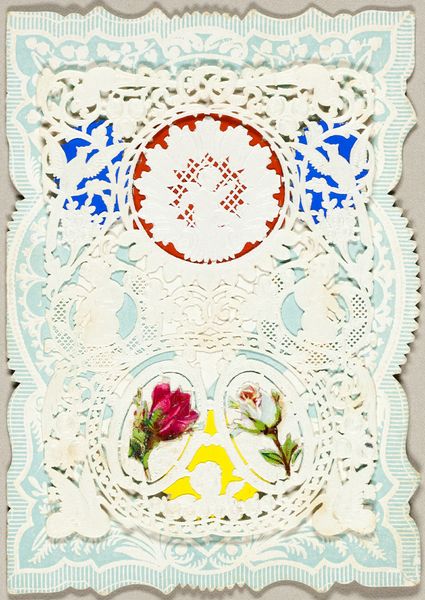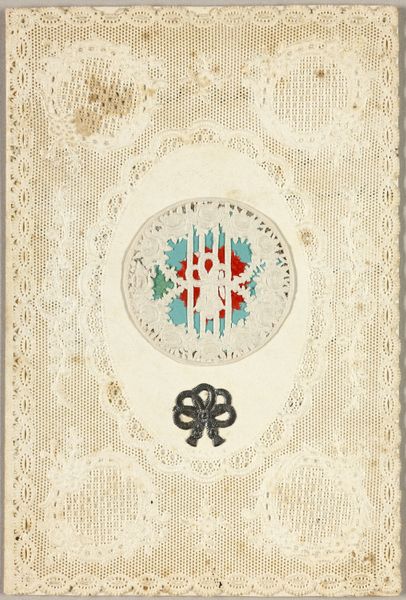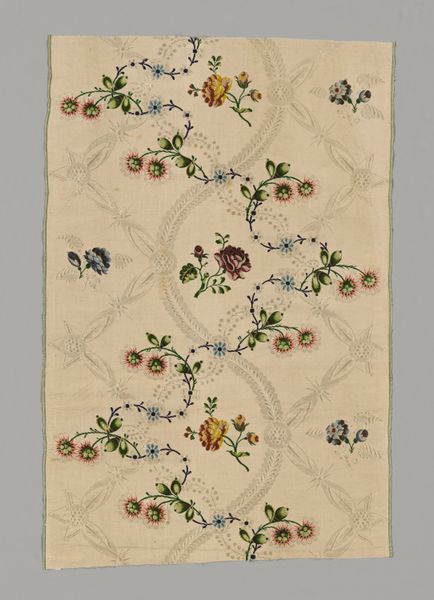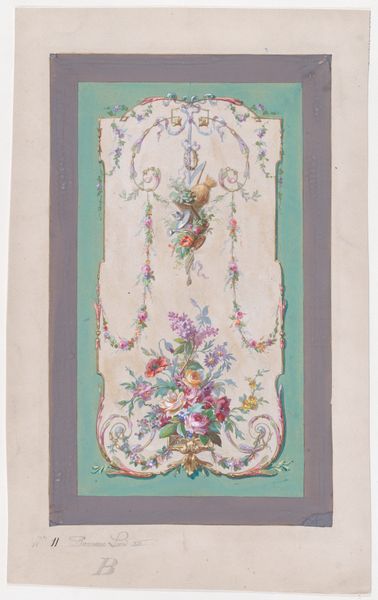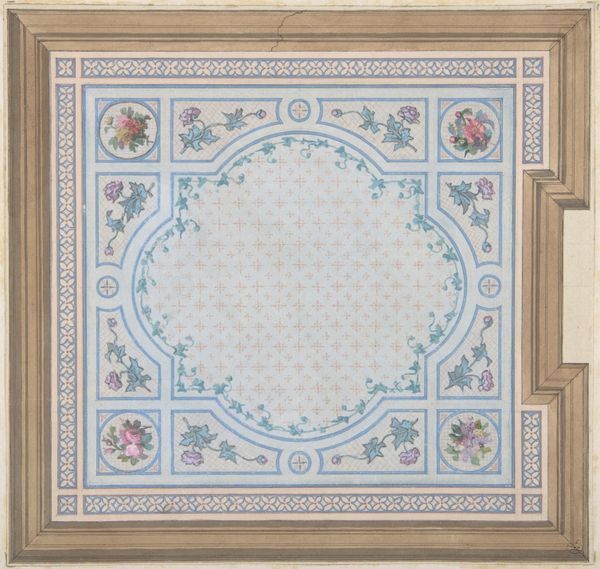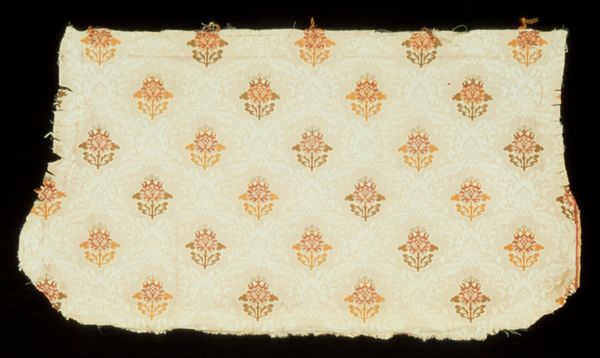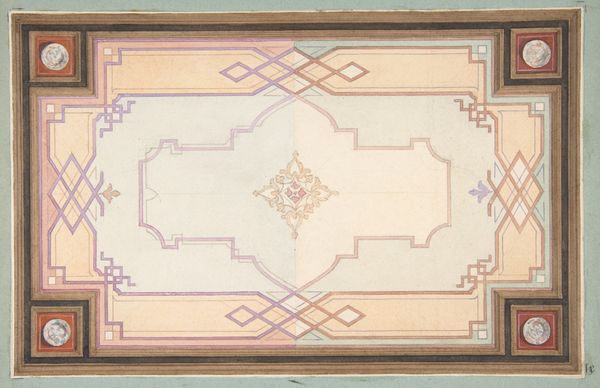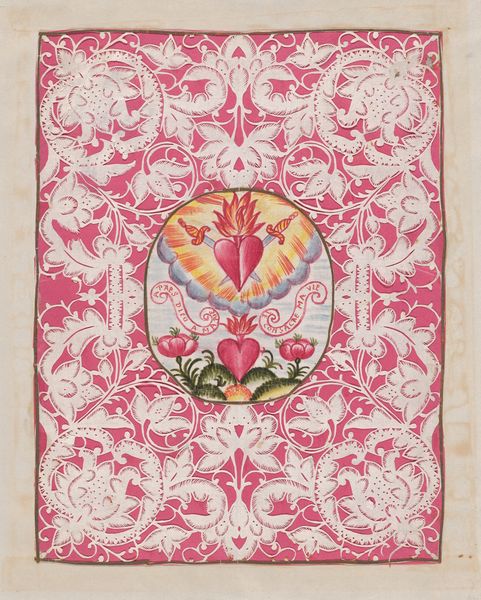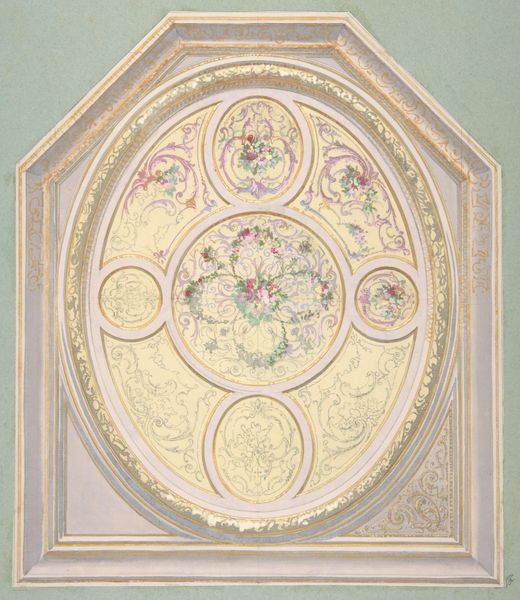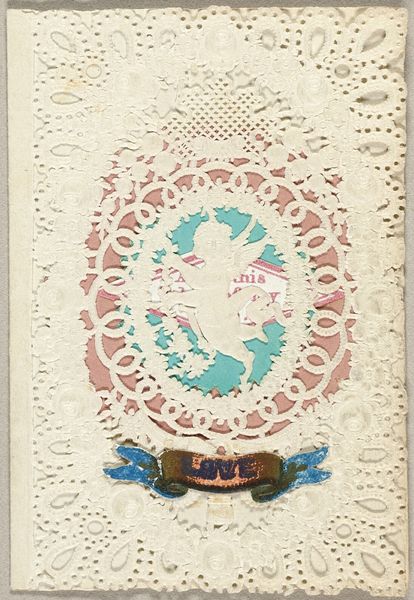
Valentine with lace paper and faux pearls 1850 - 1860
0:00
0:00
Dimensions: Sheet: 9 1/8 × 7 7/8 in. (23.2 × 20 cm)
Copyright: Public Domain
Editor: We're looking at "Valentine with lace paper and faux pearls," made around the 1850s or 60s. It’s currently held at the Metropolitan Museum of Art and is attributed to Esther Howland. It’s really quite small, a miniature world of lace and delicate detail. What sort of message do you think a Valentine like this conveys? Curator: Think about what a Valentine *meant* then. Before mass production, a handmade card spoke volumes. The lace and pearls – signifiers of luxury and refinement – become loaded with intent. This isn't just affection; it's an expression of status, perhaps even aspiration. The tiny flowers add an innocence, but the overall impression suggests more than simple romance. Editor: I hadn’t considered the status element. I just saw it as pretty. Do the different materials mean different things? Curator: Precisely. The paper evokes ephemerality, the transient nature of beauty, youth, and even life. Yet the pearls, symbols of purity and wealth, suggest endurance. There's a tension, isn't there? A longing for permanence within something inherently fragile. Even the blue evokes loyalty, constancy in love. Editor: So it’s more complex than just a token of love? It speaks about the era's social and cultural values? Curator: Indeed. It reveals the encoding of messages in visual forms, accessible only through deciphering their symbolic vocabulary. Do you think the Valentine’s cultural weight would shift if given during, say, wartime? Editor: Absolutely, the message would be radically altered by circumstance. This really makes you consider how objects gain power, not from their inherent qualities, but through time and context. Curator: I completely agree, it’s all about historical encoding.
Comments
No comments
Be the first to comment and join the conversation on the ultimate creative platform.
